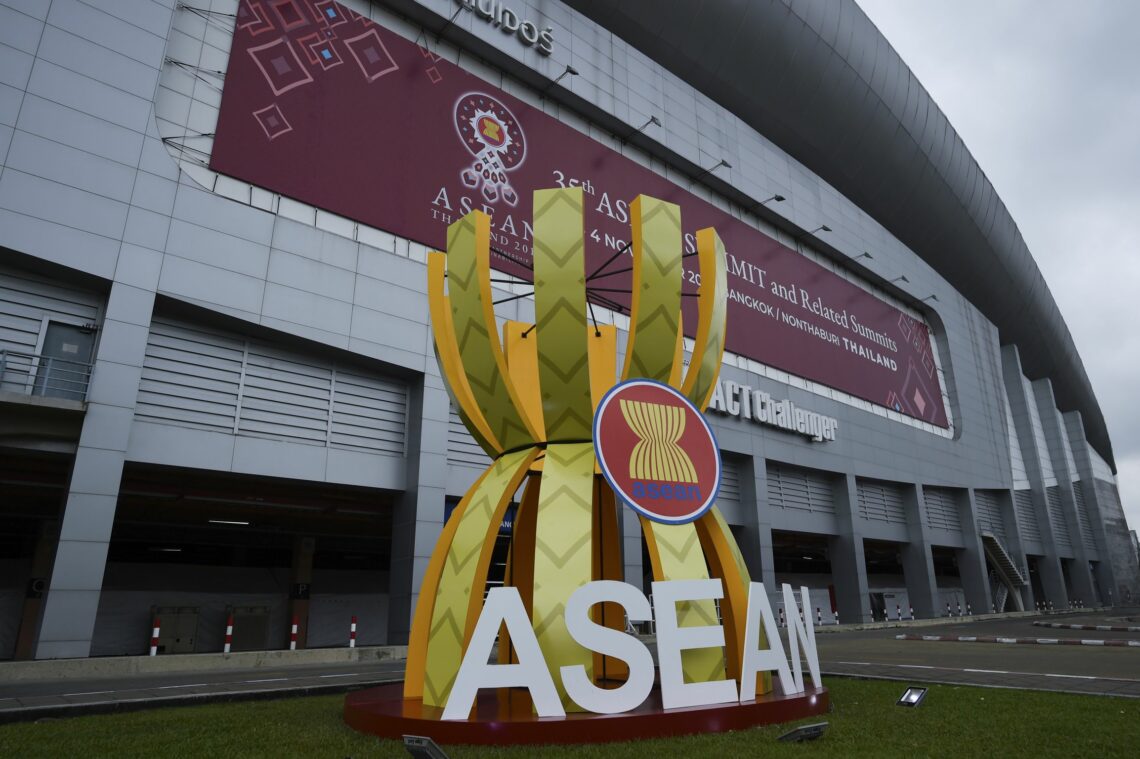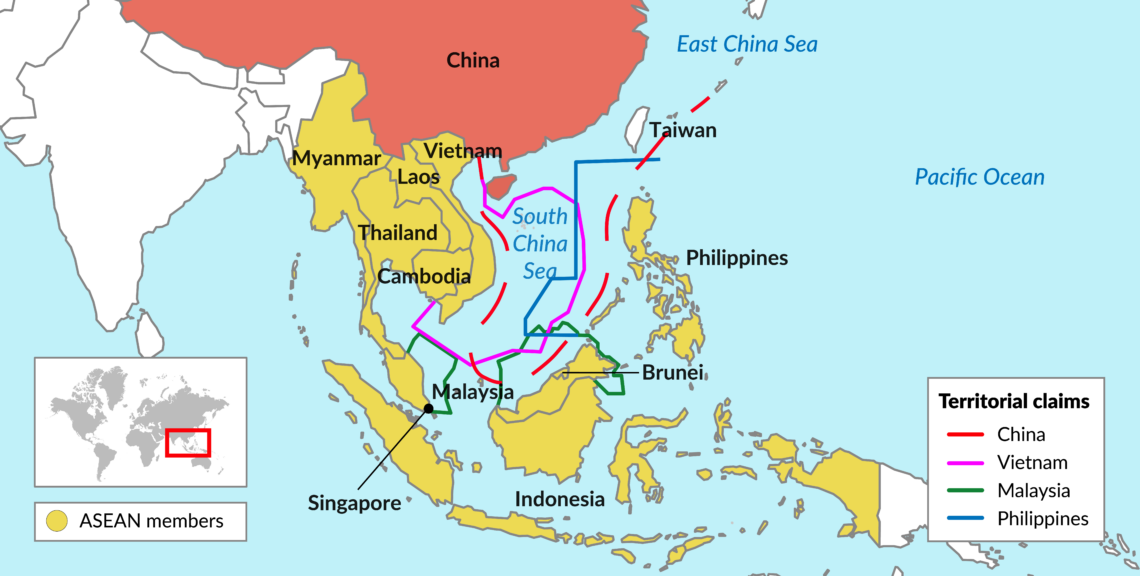ASEAN’s quest for relevance
For ASEAN to achieve real geopolitical relevance, it will need to do more to resolve the crucial issues in the region. However, the organization’s very nature – its focus on consensus and its disparate forms of government in its member states – are causing its many failures.

In a nutshell
- ASEAN wants to be at the center of geopolitics in its region
- To achieve that, it must be a key part of resolving challenges
- On Myanmar and the South China Sea, it has failed to do so
The Association of Southeast Asian Nations (ASEAN) was founded in 1967 to give its members the geopolitical room they needed to build autonomous foreign policies amid the great power competition. To fulfill this mission, however, it is not enough for ASEAN to claim, as it does, that it is at the center of regional geopolitics. Its ability to navigate great power politics relies on it being relevant to the most critical challenges the region faces. That relevancy is being called into question on two key issues: turmoil in Myanmar and the continued territorial impasse in the South China Sea.
Coup in Myanmar
Full military government returned to Myanmar with the February 2021 coup that nullified national elections and ousted its democratically elected government. Since then, the conflict between the military and much of the rest of the country has only deteriorated. Following the hopeful years of 2011 to 2020, Myanmar has descended into intense civil conflict. Confrontations with ethnic-minority armies have reignited along its borders and violence has broken out in the central Bamar-majority heartland, in places like Yangon and Mandalay. Hundreds of civilians have been killed and thousands jailed.
Although the junta has officially committed to holding new elections by August 2023, there is no credible sign that it intends to relinquish power. It has a track record. In 1990, following massive losses in a national election it expected to win, it launched a brutal crackdown. Nationwide elections were not held again for 20 years. The regime ostensibly followed a “road map to democracy” that it had initiated seven years earlier and a constitutional reform process that went back well before that. Meanwhile, the situation in Myanmar became an obstacle to its and ASEAN’s relations with the United States – benefiting China’s position in the region in the short and medium term.
It took three months for ASEAN to come up with a plan to deal with the 2021 coup.
ASEAN largely supported Myanmar in this process – admitting it into the organization along the way: it became a member in 1997. ASEAN may be demonstrating a similar indulgence this time around. It took three months for its representatives to come up with its “five-point consensus” for dealing with the 2021 coup. The points include: cessation of violence; constructive dialogue; appointment of a special ASEAN envoy; access for the envoy to Myanmar and all parties concerned; and humanitarian assistance delivered through ASEAN facilities.
Four months later it appointed the envoy, who has not yet visited Myanmar. In fact, he was forced to cancel a planned visit because the government failed to meet another one of the demands – guaranteeing access to all sides of the conflict. It has since reaffirmed this decision. So far, only the humanitarian assistance point has seen progress, with slightly more than $1 million in aid delivered eight months following the coup.
South China Sea dispute
The South China Sea dispute is the other top-shelf international problem for ASEAN. Like the Myanmar crisis, it is one with which ASEAN has a long, fraught history. It has consistently pinned all its hopes on negotiating a code of conduct with China, which ASEAN first formally proposed in 1992. The organization made no progress until 2002, when it concluded not a binding “code” but a “declaration.”
Today, negotiations on the code are still ongoing. Virtually every year, ASEAN and China claim to be on the verge of a breakthrough, and 2021 has been no exception. On a September 2021 visit to Phnom Penh, Chinese Foreign Minister Wang Yi expressed confidence that the code would be concluded during its ally Cambodia’s turn in ASEAN’s rotating chairmanship next year. The statement marking the conclusion of the most recent ASEAN summit again referenced the “progress” made toward a code of conduct.
Facts & figures
Conflicting interests in the South China Sea

Over this near 30-year focus on a code of conduct, China has occupied, reclaimed and militarized several land features in the disputed waters, and unilaterally imposed fishing bans. It has also become a looming naval presence, not just for the claimant states, but for foreign navies as well. Meanwhile, China continues to thumb its nose at the ruling handed down by the Permanent Court of Arbitration (PCA) in 2016 which invalidated its maritime claims.
At the heart of ASEAN’s failure to effectively address this issue is the fact that several of its members, including Cambodia, Thailand and Laos, have no interest in the conflict. Among the claimants, some are more interested than others – Vietnam and the Philippines being the most vocal.
ASEAN operates by consensus. These varying levels of commitment present a problem. What wins out is process – living to hold another meeting. This approach is impossible to reconcile with more results-oriented perspectives from outside the region. It also plays into an apparent Chinese strategy to drag out the process while creating faits accomplis in the sea.
Scenarios
Failure on both accounts
The most likely outcome for ASEAN on these two crises is continuing, process-heavy failure. When Myanmar finally opened up in 2011, ASEAN claimed success for its engagement strategy. This was not how the rest of the world saw it. At best, other capitals, especially Washington, saw ASEAN as ancillary to the outcome. Internationally, it was a black eye for ASEAN that was settled by virtue of changing geopolitics and Western pressure.
In both Myanmar and the South China Sea, ASEAN has been hampered by its very nature – its consensus-based decision-making and in the case of Myanmar, commitment to the principle of noninterference. This deficiency is compounded by the membership’s widely varying systems of government. It is difficult for an organization that encompasses a range of authoritarian regimes, from communist dictatorship in Vietnam and Laos to military-led government in Thailand, to pass judgment on its members on matters of governance. Besides, even if it were so inclined, there is no mechanism for expelling a member.
In this scenario, these fundamental weaknesses cause ASEAN to continue floundering. The U.S. loses patience with it on Myanmar, and in a replay of 1990-2011, does its best to bring in Japan and Western nations to address the issue. U.S.-China relations, despite some initial modest agreement on the country’s representation at the United Nations, find in Myanmar yet another point of contention. At times, the U.S. will clash with ASEAN itself – much like that previous period. Also, like then, this dynamic will benefit China.
On the South China Sea, continued stalemate on a code of conduct will invite more direct engagement by the U.S. Navy, while other outside powers, including France, the United Kingdom, Japan and Australia, will assert their naval rights there more frequently. The prospect for incidental contact between these forces (especially American) and China’s, will increase. Outside powers will continue to pay lip service to “ASEAN-centrality,” but will rely on unilateral action and new multilateral groupings like the quadrilateral security dialogue (the Quad) and the Australia-UK-U.S. (AUKUS) agreement to provide stability and protect their national interests.
Progress on Myanmar, not on the South China Sea
In the second most likely scenario, ASEAN brings greater pressure to bear on the military government in Myanmar. This results in the junta compromising with its domestic opposition. Stability is restored. The government sticks to its plans to return to democracy, and a credibly elected government takes power in two years.
Following the 1990 crackdown, ASEAN spent eight years in what it called “constructive engagement” with Myanmar before seriously considering the damage to its international reputation that the impasse was causing. After 1998, the organization became much more insistent that Myanmar address its domestic problems, culminating in 2005 with a successful appeal that it forgo its turn at the head of ASEAN.
Under this scenario, ASEAN’s five-point consensus is a sign of resolve and marks just the beginning of a concerted effort to encourage Myanmar’s military to step back. In a hopeful sign that this scenario might be playing out, the other nine ASEAN foreign ministers decided to bar junta leader Min Aung Hlaing – and any other Myanmar representatives except technical staff – from the organization’s summits. Following the first instance where this decision was implemented, at the October 2021 ASEAN leaders’ summit, the organization – including the incoming chair, Cambodia – appeared to be holding firm.
This scenario, like the previous one, assumes no progress on the South China Sea. However, ASEAN will preserve its relevance. Outside powers will be more inclined to work with it on a range of issues, and while they will continue to rely on unilateral action and cooperation with allies on matters related to the South China Sea, they will put slightly more stock in its efforts to reach a compromise there as well. They will give greater consideration to the concept of ASEAN-centered regional order and the organization’s perspectives on other regional groupings, like the Quad and AUKUS.
Success on both accounts
The least likely scenario assumes the outcome on Myanmar from the second scenario, and success on a binding code of conduct that preserves the internationally recognized rights of all – including the U.S. – to the waters of the South China Sea. Success also entails Chinese compliance with the code and leads to a positive change in its behavior more generally.
One of the problems with the way ASEAN has handled this issue over the decades is that Chinese moves like reclamation and militarization are essentially permanent. At this point, any “success” cannot reasonably result in a reversal of these gains, despite them being at odds with the findings of the PCA.
ASEAN will not make China comply with its obligations under the UN Convention on the Law of the Sea. But China can refrain from things such as new reclamations, provocative deployments in neighbors’ exclusive economic zones, unilateral administration of disputed waters, and any unilateral declaration of a new air defense identification zone over the South China Sea. China could also implicitly comply with some of the more minor aspects of the PCA findings, such as those regarding fisheries.
Were this third scenario to unfold, ASEAN would gain the confidence of outsiders to take a more active role in regional geopolitics. Foreign powers would still maintain their independent options, especially in the South China Sea, but they would also consult with ASEAN in good faith, not just pay it lip service. ASEAN-centered institutions would gain credibility among other multilateral security efforts like the Quad and AUKUS.








